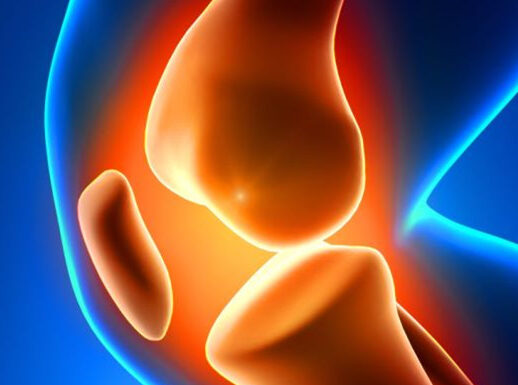China’s aging society is facing new challenges to orthopedics, the incidence of osteoarthritis of the knee in China is increasing year by year, the latest data show that the prevalence of osteoarthritis of the knee in China is 8.1%, the country about 120 million people suffer from osteoarthritis pain of the knee.
Important factors in the incidence of osteoarthritis
Age: Age is one of the most obvious risk factors. The incidence of any arthritis increases with age.
- The progression of osteoarthritis is so slow that arthritic changes in joints that have suffered damage early in life may not appear until several years later.
- As age increases, the biomechanics of the joints change, leading to arthritis.
Gender
- Women over 50 years of age OA is mostly seen in women with muscle weakness.
- Female knee inversion, valgus laxity is greater than male.
- Associated with estrogen deficiency: low OA incidence after HRT.
Obesity
- OA is associated with body mass index: for every 10 lb increase in body weight, the incidence of OA increases by nearly 40%; weight loss can reduce the incidence of OA.
- Increased BMI (height body mass index) is associated with WHR (waist-to-hip ratio), and BMI from age 18 can predict WHR later in life.
- Studies have shown that reducing 5 kg of body weight can reduce joint pain by 20%, and that weight reduction plus appropriate exercise is as important as, or better than, medication.
Irritation of nerve endings emanating from the nerves around the joint is the main cause of osteoarthritis pain.
Clinical manifestations
- Pain: deep in, poorly localized, early pain after joint movement; late joint pain at rest.
- Stiffness: confined to the affected joint, rarely longer than 15-30 minutes, associated with weather changes.
- Frictional sounds.
- Restricted joint movement.
- Sudden hitting of weight-bearing joints with weak legs.
Slowly progressive recurrent episodes of pain.
Dull pain: mild → severe
Pain during activity: frictional pain → rest pain
Pain on rising in the morning/better with activity → climate related
- Swollen and deformed joints.
- Joint stiffness and limitation of movement
- With secondary synovitis.
Diagnostic criteria for osteoarthritis of the knee
- Recurrent knee pain in the past month.
- X-ray shows narrowing of the joint space, subchondral bone sclerosis or cystic changes, and formation of osteoid at the joint end.
- Clear and viscous joint fluid (at least 2 times) with leukocytes < 2000/ml.
- Age >40 years.
- Morning stiffness <15 minutes.
- Bone rubbing sensation during activity.
X-ray manifestations
- Asymmetric joint space narrowing.
- subchondral osteosclerosis and cystic changes.
- Osteomalacia and osteophyte formation at the joint margins.
- Intra-articular free bodies.
- Joint deformation and subluxation
These changes are important in the diagnosis of osteoarthritis.
Non-pharmacological treatment of osteoarthritis
- Patient education
- Proper nutrition, weight loss
- Aerobic exercise
- Physical therapy, physiotherapy
- Mobility aids
- Vocational training
Patient education
- Patient education, as well as education of family, friends, etc., is an important part of OA treatment
- Etiology analysis (weight, occupation, exercise patterns)
- Natural course of disease and hazards
- Treatment planning and prognosis
- Psychosocial
Diet and weight
- A balanced diet
Fruits, vegetables, grains, calcium-containing foods, lean meats
Weight loss
- Obesity increases the load on the joints, for every 1KG increase in body weight, the hip and knee joints will increase by 4KG.
- High dose of Vc can slow down the progression of arthritis by 3 times. OA progresses faster when VitD decreases.
Aerobic exercise and muscle training
- Weak quadriceps reduce joint stability and decrease the ability of the muscles to “shock absorb”.
- Consistent participation in aerobic exercise and quadriceps training can significantly reduce the pain of arthritis and decrease the use of medications.
Walking aids
- Comfortable shoes – good shock absorption and reduce the impact on the joints.
- Walking stick – reduces the load on the joints
- Wedge insoles – for internal knee roll.
Physical Therapy
- Manual orthopedics to restore the normal position of the joint and restore the function of the ligaments.
- Chinese herbal heat application and electrotherapy can relieve soft tissue tension.
- Small needle knife and buried needle knife can loosen adhesions around the joint.
- Radioactive shock wave is effective in restoring joint pain, stiffness and difficulty in movement. The advantages are non-invasive, fast recovery, few complications, and economic convenience. It is widely used for various pains, post-surgical adhesions, chronic injuries, joint stiffness and limited movement, delayed fracture healing, and achalasia.
Summary of non-pharmacological treatment
- Pay attention to avoid cold and rheumatism, not to be cool in summer, and avoid weight-bearing as much as possible when symptoms are obvious.
- Avoid trauma.
- Do not exercise reluctantly.
- Obese people should lose weight.
- Use a sitting toilet.
- Use a walking stick when walking.
- The weakening of the knee joint starts with the weakening of the quadriceps muscle. Intensive training of the quadriceps muscle is necessary for all patients.
Commonly used drugs and biological treatments
- Medications to improve symptoms.
Acetaminophen NSAIDs, rub-on painkillers, narcotic analgesics, myorelaxants.
- Drugs to improve structure.
Diacerein, chondroitin sulfate, glucosamine sulfate.
- Intra-articular injection drugs.
Sodium hyaluronate, glucocorticoids.
- Biological therapy.
Platelet-rich plasma (PRP), stem cells.








